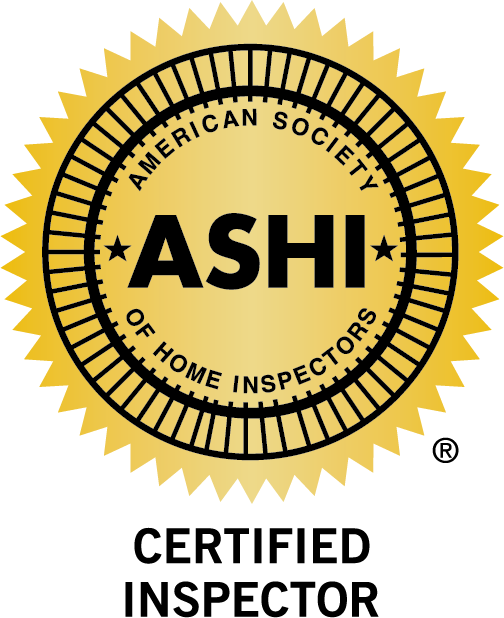Home Inspection for Radon
What is the average level of radon found in homes in the U.S.? Based on a national residential radon survey completed in 1991, the average indoor radon level is about 1.3 picocuries per liter (pCi/L) in air in the United States. The average outdoor level is about 0.4 pCi/L.
Radon-222 is the decay product of radium-226. Radon-222 and its parent, radium-226, are part of the long decay chain for uranium-238. Since uranium is essentially ubiquitous (being or seeming to be everywhere at the same time) in the earth’s crust, radium-226 and radon-222 are present in almost all rock and all soil and water. The amount of radon in the soil depends on soil chemistry, which varies from one house to the next. Radon levels in the soil range from a few hundred to several thousands of pCi/L (picocuries per liter) in air. The amount of radon that escapes from the soil to enter the house depends on the weather, soil porosity, soil moisture, and the suction within the house. See www.epa.gov/radon
There are two basic types of stucco cladding applied to the exterior of homes. There is Hardcoat which is typically 3/8” to ½” thick and does not have the EPS (Extruded Polystyrene) foam boards behind the stucco. The other type is EIFS (Exterior Insulated Finish System) which consists of the 2” foam board with a thin coat of stucco material on the exterior. Both systems, if properly installed and maintained, are good exterior cladding system to protect your home. It is important to maintain all stucco system to ensure that all sealants and caulking around doors, windows and penetrations such as light fixtures, pipes and wires have not cracked or separated. Failing sealants are one of the major causes for moisture intrusion and damage to the home. Monitoring and repairing cracks is also important to keep the system dry. Hardcoat systems are prone to hairline cracks and they should be repaired if the cracks are wider than 1/16 of an inch. Also look for moisture stains or discoloration which may be an indication of moisture intrusion. It is important to maintain all stucco system to ensure that all sealants and caulking around doors, windows and penetrations such as light fixtures, pipes and wires have not cracked or separated. Failing sealants are one of the major causes for moisture intrusion and damage to the home. Monitoring and repairing cracks is also important to keep the system dry. Hardcoat systems are prone to hairline cracks and they should be repaired if the cracks are wider than 1/16 of an inch. Also look for moisture stains or discoloration which may be an indication of moisture intrusion. David Graves, ASHI Certified, EDI Certified Home Systems Data, Inc.
We all know that a picture is worth a thousand words and this certainly applies to infrared technology. An Infrared inspection can instantly visualize and verify for thermal performance and moisture intrusion. This makes infrared technology key for maintaining residential and commercial properties. An infrared inspection can identify hidden moisture intrusions around doors, windows, roofs and plumbing. Infrared can be used for examining heat loss and energy performance as well as a useful tool for maintenance of electrical and mechanical equipment. Infrared technology is not part of a standard ASHI inspection however nothing beats it for finding hidden defects.
Most homes constructed from the 1890’s through the mid 1950’s originally had roofs that were cedar shingles, not to be confused with cedar shake roofs. These shingles are about 3/8’s” thick at the end, smooth and usually installed over skip decking to allow them to dry evenly. Over the years Denver and other counties have allowed new composition roofs to be installed over these cedar shingles. Recently, because of the cost to remove all the layers of roofing and install new decking, underwriters for insurance carriers have issued a directive that new policies will not be written on these homes unless the roofs are replaced. If you are listing or buying an older home be aware of this new directive, as it has caused some serious transaction problems. Contact a qualified roofing contractor or Home Systems Data Inc. for more details and an inspection. Bryan Jones – ASHI #2166 President Home Systems Data, Inc. 303-773-6102 www.hsdi.us
Tips for preparing your home for the winter season Living in Colorado, residents experience a full range of weather conditions and all four seasons. With winter coming on it is a good idea take a few easy steps inside and outside your home to help reduce energy costs and protect vital systems from winter’s wrath. Different eras and type of construction will affect what steps you should take to protect your investment. These steps should be taken before the first freeze of the season, usually mid-October. Caulking and weather-stripping. To prevent air leaks around windows, doors, and penetrations, inspect caulking both inside and out. High quality paintable caulking is recommended for most areas, stucco and other masonry surfaces will require special caulking. Old failed or cracked caulk should be removed before new is installed. Ensure windows and doors close tightly, no light can be seen around their edges when closed, and no air is coming in through edges due to worn weather stripping. Windows. If you have insulated glass windows you don’t need to do much, visually inspect weather-stripping, caulking inside and outside, and clean tracks. Single pane windows can have storm units installed or use plastic sheet insulating kits to improve efficiency. Replacing single pane windows with insulated glass units can improve efficiency as well; look for energy ratings before having new windows installed. If windows are replaced permits should be pulled to ensure the installation meets the most current building standards. Furnace. CHANGE THE FILTER, and frequently; monthly while running the furnace and A/C if so equipped. Vacuum the blower, blower motor, and other interior components, or use computer compressed air to blow dust off components. Average life is 15-20 years for modern units, if your furnace is more than 15 years old have it serviced and certified for safe operation annually by a qualified technician. If the unit is replaced permits should be pulled to ensure the installation meets the most current building standards. Boiler. Inspect the boiler and all visible pipes for leaks. Average life span of a boiler is 20-25 years, if your boiler is more than 15 years old have it serviced and evaluated by a qualified technician annually. Smoke and Carbon Monoxide (CO) alarms. First things first, the abbreviation for carbon monoxide is CO not CO2. Carbon monoxide (CO) is a poisonous gas that is produced during combustion. Carbon dioxide (CO2) is what we breathe out and plants take in. Replace batteries in all smoke and CO alarms. Smoke alarms should be replaced if more than 10 years old, CO alarms at 5 years. Hose Spigots. Always remove hoses from spigots. If your valves are frost-free this is all you will need to do, if you don’t remove the hose the pipe will freeze inside the wall and cause interior damage the next time you use it. If you have an older home your spigots may not be frost-free. These will have a valve inside that should be turned off and the lines drained. Hardware stores sell foam “igloos” that can cover the hose spigots, do not rely on these alone to keep the pipes from freezing. Sprinkler System and lawn. Have your sprinkler system professionally winterized. Apply a winterizing fertilizer to your lawn and have it aerated. Landscape. Clean up flower beds, wrap young trees, and trim tree limbs that are touching buildings, are dead/diseased, or could be damaged by snow load. Adding a layer of mulch or fallen leaves around tree and shrub bases helps to insulate and retain moisture through the season. Water trees and shrubs at least once a month. Gutters and roof. Clean gutters and roof surfaces of debris. Gutters can be damaged if water does not drain and freezes in them. Debris on roofs can cause water to back up and ice dams may occur, pay special attention to valleys and northern exposures. Be sure gutter extensions are installed, are at least 5 feet long, and are clear of debris. Emergency kit. Winter storms can knockout power or make it difficult to leave the home, an emergency kit should have essential materials in one place. Use a plastic tub labeled clearly and accessible. Include matches and candles, flashlights, first-aid kit, nonperishable food, bottled water, a battery powered radio, extra batteries. Having a similar kit in each car, with blankets added, is also a good idea. When hiring a contractor to do any of the work above, be sure they are qualified to do such work, get references, and if a major component such as a furnace or boiler needs to be replaced, get second and third opinions and competitive estimates. At the time of failure it may seem like you need to have the work done immediately, but remember you can wear more clothing and use blankets to stay warm, and it will take several hours or even days before pipes will freeze, turning on water in sinks and tubs will also help to keep pipes from freezing.
Radon Myths by Kristin Hull










